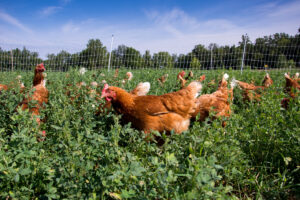| Best for | Product |
|---|---|
| Best Overall | The Bee: A Kid’s Guide to Getting Started in Beekeeping |
| Best Board Book | Discovering the Busy World of the Beehive (Happy Fox Books) |
| Best for Learning the Alphabet | B is for Beekeeping: An Alphabet Book |
| Best Fear-Dispelling | David of the Bees |
| Best for Middle- and High-School Kids | Honey Teaches Beekeeping |
You might have a kiddo who’s drawn to all things bees and befriends them wherever they go. You may have a kiddo on the opposite end of the spectrum who is terrified of bees. Either way, children’s books about beekeeping can help them learn more about the importance of bees for a healthy ecosystem. For kiddos who are afraid of bees, a good fear-dispelling book is in order.
These types of books take the mystery and fear away and explain bees in a way that’s easy to understand. For bee-loving kiddos, a beekeeping book may just lead them toward a lifetime hobby of helping bees live healthy, successful lives. We put together a list of our top five picks below for you to explore and get your kiddo better acquainted with everything related to beekeeping.
 Check Amazon
Check Amazon- 50 pages.
- Designed to be a beginner's guide to beekeeping specifically for children.
- Written by an 8-year-old beekeeper.
 Check Amazon
Check Amazon- 14 pages.
- Recommended for children ages 2 through 5.
- Seeks to teach children about bee colonies and how they operate.
- Filled with charming illustrations.
 Check Amazon
Check Amazon- 27 pages.
- Teaches the importance of the role bees play in the ecosystem, while also teaching the alphabet.
- Donations are made to bee-preservation organizations with each purchase.
- A relatively new publication, first released in July 2022.
 Check Amazon
Check Amazon- 41 pages.
- Recommended for children ages 5 through 11.
- Works to teach children all about bees, and with hope, dispel their fear of bees.
- Explains that bees don't actively search for sting victims.
 Check Amazon
Check Amazon- 59 pages.
- Recommended for middle- and high-school students.
- An in-depth look at beekeeping that goes beyond the basics.
- A sister book, Honey Teaches Beekeeping to Kids, is also available, designed for younger kids.
A-Z-Animals’ Top Picks for the Best Children’s Books About Beekeeping
#1 Best Overall: The Bee: A Kid’s Guide to Getting Started in Beekeeping by Hudson E Dunlap
The best children’s book about beekeeping is The Bee: A Kid’s Guide to Getting Started in Beekeeping. If you have a child who is ready to learn about beekeeping, who better to teach them than an eight-year-old beekeeper? This book’s author is Hudson Dunlap. He put together this book to provide other children with some basics about beekeeping. It’s laid out in a very easy-to-understand manner and is a total of 50 pages in length. It comes in paperback format.
On average, customers rate this book 4.6 out of five stars. They appreciate that it delivers information in a digestible way for children. Children as young as six years old are enjoying the book. Dunlap does a wonderful job of answering their bee questions. Even adults who are reading this along with their children are learning new facts about these that they didn’t previously know. It’s rather short and isn’t overwhelming with detail, which is ideal for little ones as they get more acquainted with the practice of beekeeping.
We were only able to find one negative review, which read, “Very simple and more for four/five year old than older child. It’s much shorter than I’d thought and doesn’t have much detail.”
Pros and Cons of The Bee: A Kid’s Guide to Getting Started in Beekeeping by Hudson E Dunlap
| Pros | Cons |
|---|---|
| This book was written by an eight-year-old beekeeper to teach kids beekeeping basics. | A single reviewer said that it was more appropriate for four- to five-year-old children, was too short, and wasn’t detailed enough. |
| It’s written in an easy-to-understand style and has a total of 50 pages. |
- 50 pages.
- Designed to be a beginner's guide to beekeeping specifically for children.
- Written by an 8-year-old beekeeper.
2. Best Board Book: Discovering the Busy World of the Beehive by Petra Bartikova and Martin Sojdr
Discovering the Busy World of the Beehive takes children into the intricate world of a beehive. It’s a board book that’s only 14 pages long but it contains beautiful illustrations to give children a unique peek into the different roles bees have in terms of collecting pollen and producing honey.
There are a couple of cut-out accents along with all of the bright illustrations. The book is designed to teach kids new vocabulary words, and fun facts. It’s a board book so it’s ideal for children between two and five years old. It’s a great way to start instilling the love and appreciation for bees that may eventually turn into a beekeeping hobby.
Customers call this an educational and fun read. It contains some interesting facts and more detailed knowledge that an older child could appreciate. One customer shared that she has kids who are three years apart and both were able to get something out of this board book. Overall, customers appreciate that it offers them an opportunity to teach their kiddos about the importance of protecting bee populations.
A couple of reviewers said that the content was too complex and the book was too “busy” for small children.
Pros and Cons of Discovering the Busy World of the Beehive by Petra Bartikova and Martin Sojdr
| Pros | Cons |
|---|---|
| This board book is only 14 pages long but features beautiful illustrations of the different roles of bees in collecting pollen and making honey. | A couple of reviewers said that the content was too complex and the book was too “busy” for small children. |
| The book also features cut-out accents. | |
| It’s designed to teach children ages two to five years old new vocabulary words and fun facts. |
- 14 pages.
- Recommended for children ages 2 through 5.
- Seeks to teach children about bee colonies and how they operate.
- Filled with charming illustrations.
3. Best for Learning the Alphabet: B is for Beekeeping: An Alphabet Book by Justin Weiss (Author), Winda Mulyasari (Illustrator)
B is for Beekeeping: An Alphabet Book is ideal for your young beekeeping enthusiast. It’s geared towards babies through eight year olds and contains easy-to-understand vocabulary words along with cute illustrations. Kids learn the ABCs of beekeeping while they practice the alphabet. It’s a great buy because it also benefits bees. With each purchase, the author makes a special donation to different organizations that help to preserve bees.
This book has a 4.8 out of five-star rating. Your kiddo can read through this quickly and still learn tons of fun facts. The illustrations are colorful and draw the interest of children. Since children are constantly learning through this book, they can share with their classmates and parents to further cement their new understanding of beekeeping and the alphabet. One customer managed to circumvent a bee phobia after a bee stung her son. She helped to reframe the entire experience with the help of this book!
We were unable to find any critical reviews for this book.
Pros and Cons of B is for Beekeeping: An Alphabet Book by Justin Weiss (Author), Winda Mulyasari (Illustrator)
| Pros | Cons |
|---|---|
| It’s written for babies through eight year olds. | None |
| Children learn the ABCs of beekeeping while practicing the alphabet. | |
| It features easy-to-understand vocabulary and cute illustrations. | |
| With each purchase, the author makes a donation to organizations that help preserve bees. |
- 27 pages.
- Teaches the importance of the role bees play in the ecosystem, while also teaching the alphabet.
- Donations are made to bee-preservation organizations with each purchase.
- A relatively new publication, first released in July 2022.
4. Best Fear-Dispelling: David of the Bees by Francie Farmer (Author), Sam Scarlato (Narrator)
David of the Bees is a fantastic audiobook for children who are afraid of bees.
Some children naturally gravitate to bees. For others, it may take a little bit of learning before they feel comfortable around them. They may have experienced a sting or have had an otherwise unpleasant experience around bees. The author answers questions like “Should we be afraid of bees?” and “What’s a beekeeper?”
This title is only available as an audiobook. But we think it’s worth listening to with your child. It’s perfect for kids between the ages of five and 11. It’s an encouraging book that follows Kathy, a character in the book, who manages to get over her fear of bees in the end. Customers rate this book highly because it’s straight to the point and answers the questions children have about bees. It can be nerve-wracking for kids who are afraid of bees to go outside in the spring or summer and face them regularly.
Instead of letting that fear fester and grow, you can introduce them to a book that answers all those questions they have swirling around in their minds. They gain a better understanding of why bees do what they do. Customers appreciate that the book lets kids know that bees aren’t intentionally looking for people to sting. It also shares how a beekeeper in the story cares for his own bees.
There were no negative reviews for this audiobook.
Pros and Cons of David of the Bees by Francie Farmer (Author), Sam Scarlato (Narrator)
| Pros | Cons |
|---|---|
| This audiobook is ideal for kids who are afraid of bees. | It’s only available as an audiobook. |
| The author asks questions such as “Should we be afraid of bees?” and “What’s a beekeeper?” | |
| It follows a character who manages to overcome her fear of bees. | |
| It’s written for children ages five to 11. |
- 41 pages.
- Recommended for children ages 5 through 11.
- Works to teach children all about bees, and with hope, dispel their fear of bees.
- Explains that bees don't actively search for sting victims.
5. Best for Middle- and High-School Kids: Honey Teaches Beekeeping by Justin Ruger
Honey Teaches Beekeeping offers a more in-depth look into beekeeping and is specifically for older children who are in middle or high school. The book introduces Honey, who is the queen bee of her hive. The knowledge comes from her, and the book incorporates whimsical art along with live photos. Your kids learn about hive inspections, pests, and honey extraction. It’s a total of 45 pages in length.
Customers appreciate that this book is part of a series. There is the first book that introduces Henry, a boy who meets Honey, the queen bee. You can pick up both and follow along into the second book as Honey takes over as the narrator and teaches beekeeping to children. A third book also highlights Honey as she teaches beekeeping, but that book is for elementary school kids. You can get the whole family to fall in love with these beekeeping books!
No reviews were available for this book.
Pros and Cons of Honey Teaches Beekeeping by Justin Ruger
| Pros | Cons |
|---|---|
| This book takes a more in-depth look at beekeeping. | None |
| This 45-page book is written for middle school and high school students. | |
| The queen bee, Honey, imparts the knowledge about inspections, pests, and honey extraction. | |
| The book combines whimsical art and photos. |
- 59 pages.
- Recommended for middle- and high-school students.
- An in-depth look at beekeeping that goes beyond the basics.
- A sister book, Honey Teaches Beekeeping to Kids, is also available, designed for younger kids.
Criteria: What to Look for in Children’s Books About Beekeeping
Before deciding on the best children’s books about beekeeping, consider the following criteria:
Reading Level
This is by far the most important factor when deciding on the right book. You can find this information in the product description to be sure you’re picking up a book that the kiddo in your life can enjoy thoroughly. As your kiddo grows, you can pick up books that incorporate more vocabulary words and longer sentences.
Book Type
Some books help lay a foundation for further understanding. These encompass the basics and are ideal for younger readers. You can even get a toddler engaged with the topic of beekeeping to grow their interest! Other books are more complex and explore more in-depth and detailed aspects of beekeeping. Some books even help with other activities, like learning the alphabet while teaching beekeeping terms.
| Best for | Product |
|---|---|
| Best Overall | The Bee: A Kid’s Guide to Getting Started in Beekeeping |
| Best Board Book | Discovering the Busy World of the Beehive (Happy Fox Books) |
| Best for Learning the Alphabet | B is for Beekeeping: An Alphabet Book |
| Best Fear-Dispelling | David of the Bees |
| Best for Middle- and High-School Kids | Honey Teaches Beekeeping |
The 5 Best Children’s Books About Beekeeping for All Reading Levels FAQs (Frequently Asked Questions)
How do you explain to kids why bees are important?
You can explain that bees have an important job of pollinating different types of flowers that help with supplying the foods we eat! Accompany this explanation with a book that includes illustrations so they can experience the explanation visually as well.
How many beehives should a beginner start with?
Keeping beehives requires both artistry and scientific thinking. Beginners should start with two beehives for their first couple of years to gain the experience required for keeping healthy bees.
Thank you for reading! Have some feedback for us? Contact the AZ Animals editorial team.




